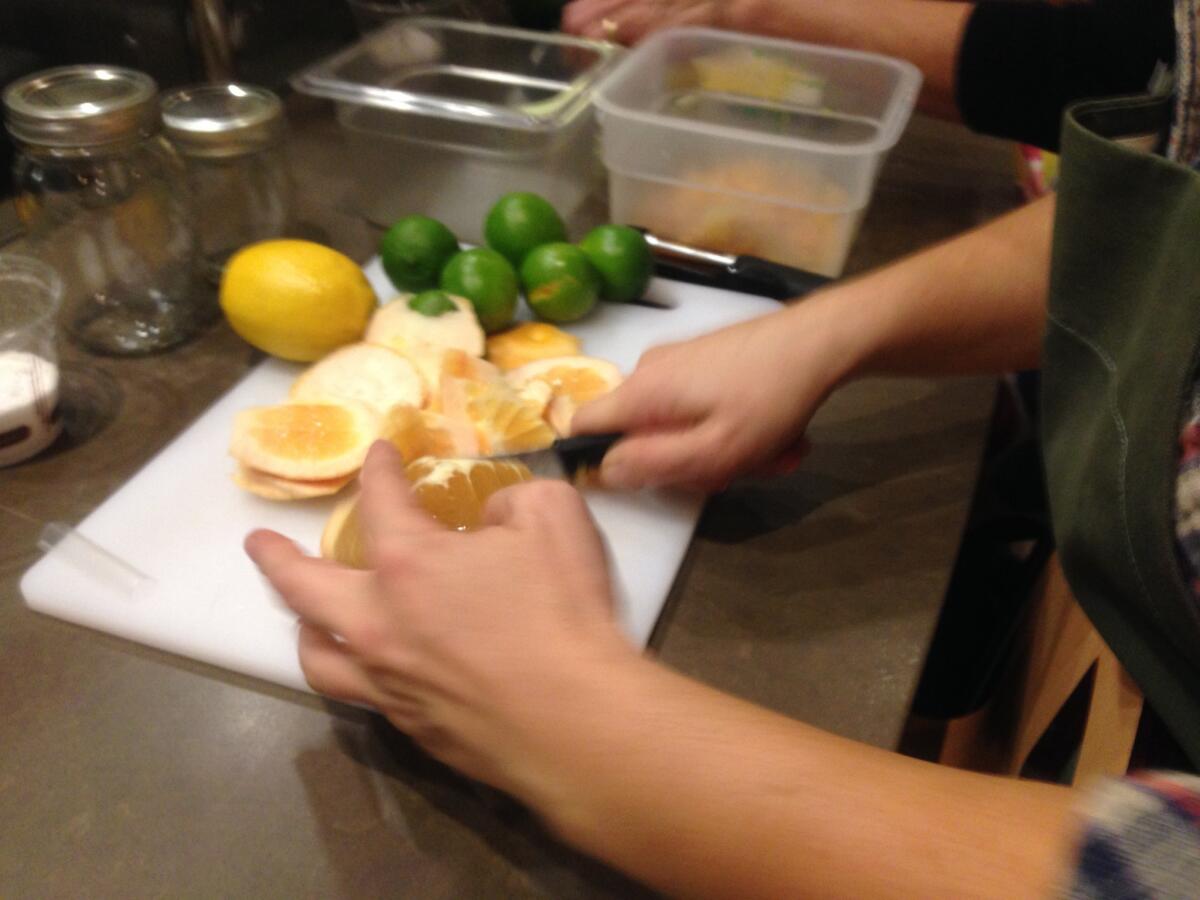What are you going to do with all those lemons, oranges, limes? Can them!

- Share via
Ernest Miller, canner and preserver extraordinaire, is also a major California booster. His chef’s jacket has his company name and logo (Rancho La Merced Provisions) over the left breast but the California bear on the collar.
And in class Wednesday night, his lecture could be commandeered by California tourism officials. We made marmalade with grapefruit from Miller’s yard, and lemons and oranges. And we made preserved limes, a twist on the more common preserved lemons using salt to cure the fruit. The result can be used in pastas, soups, sauces, salads and more.
Miller’s 12-week course on canning and preserving is held Wednesdays in the cafe near the Hollywood farmers market called the Farmer’s Kitchen.
All that citrus, of course, is a California agricultural hallmark, and Miller said the context of food is crucial. “California is the greatest food region in the world,” he said, with many climates that are perfect for different sorts of foods.
California walnuts, citrus, avocadoes and other crops dominate their markets, he said.
The history is fascinating, of course, and Miller suggested many places where the state’s food history is on display. Among them are the missions, where priests were charged not only with converting people to Catholicism but also with bringing agriculture to a hunter-gatherer society. The first orange grove, he said, was planted near the San Gabriel Mission. UC Riverside is the leading citrus research institution, and the Hass avocado was first grown by a Whittier postal carrier.
The marmalade was made without adding other pectin, just that in the fruit. We used the zest and the pulp, plus sugar. We used navel oranges because bitter oranges like Sevilles are not ripe yet locally. (“My neighbor’s tree is loaded with green ones,” Miller noted.)
There are many ways to make this preserve, some calling for whole fruit, with various cooking times. Ours turned out a beautiful orange color, brimming the pieces of fruit and zest.
“California -- it’s amazing!” Miller concluded.
The course is a project of the nonprofit Food Forward and its Can It! Academy.
ALSO:
High-end bakeries turn out gluten-free treats
More to Read
Eat your way across L.A.
Get our weekly Tasting Notes newsletter for reviews, news and more.
You may occasionally receive promotional content from the Los Angeles Times.










